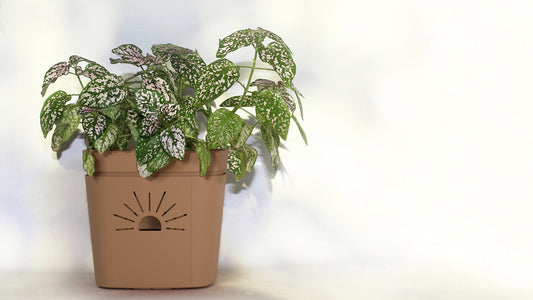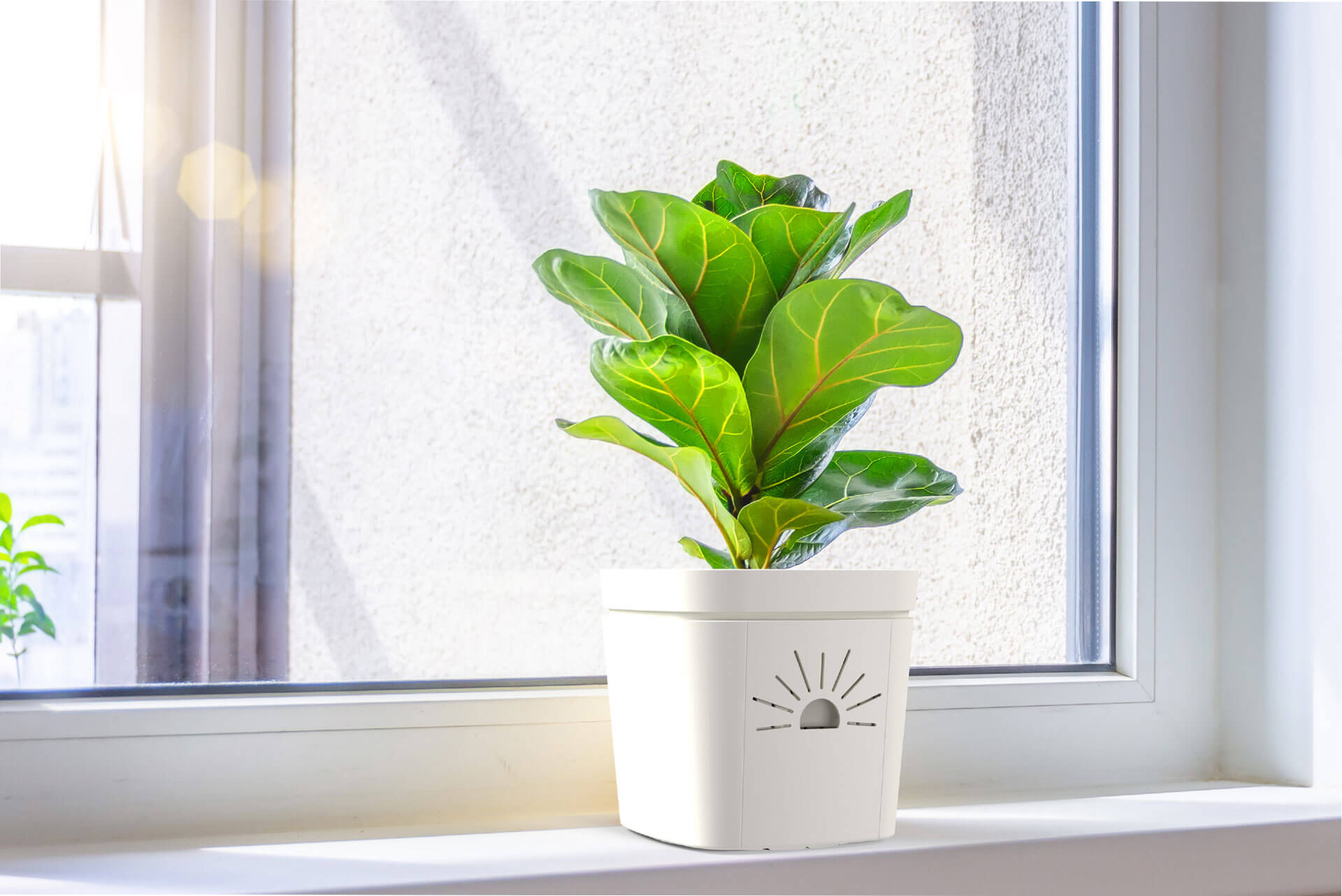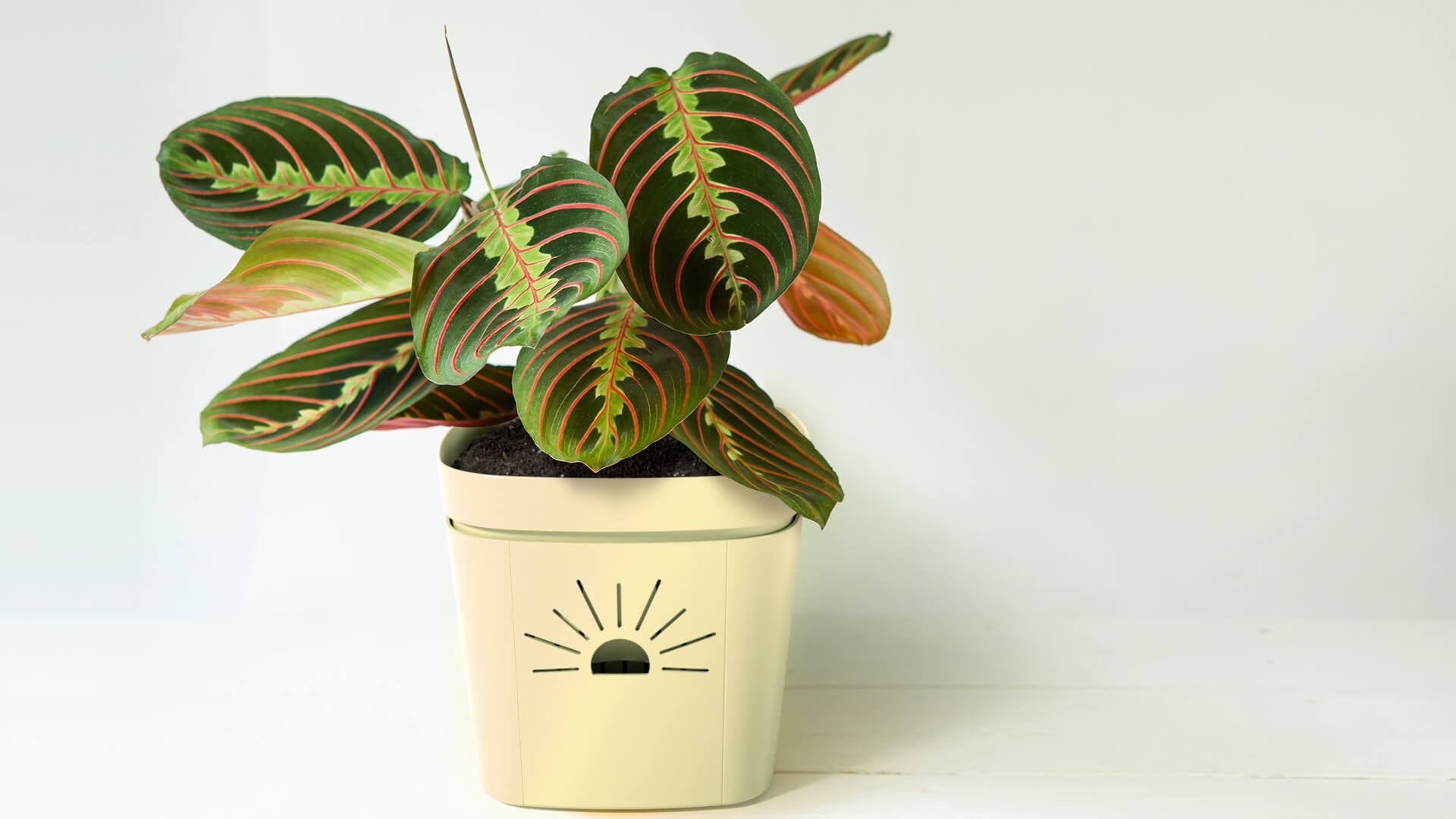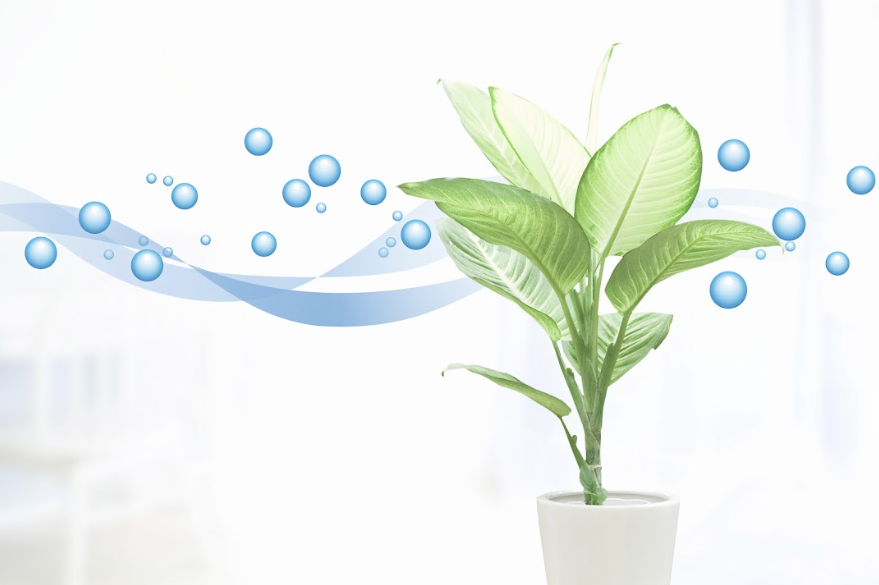Origins
Hypoestes is a genus of about 150 flowering plants native to the tropical and subtropical areas located around the Indian Ocean. This type of plant belongs to the Acanthaceae family, specifically its subfamily Acanthoideae. It is related to the Fittonia, Justicia, and Carlowrightia genera found in America.
The name Hypoestes originates from the Greek words ‘hypo’ (under) and ‘estia’ (house), which refer to the way the flowers are concealed by their bracts. Many of these small shrubs or herbaceous plants display brightly patterned leaves with bright colors. Some are grown as ornamental plants or houseplants. Common names for Hypestes include polka dot plant, measles plant, pink dot plant, flamingo plant, and freckle-face plant.
Light
Requirements
Polka dot plants prefer bright indirect lighting. If you live in the northern hemisphere, this can be an east window or 2 feet away from a south-facing window. Either too much or too little light will cause the foliage to fade and look bleached.
When grown outdoors, an area with morning sun and afternoon shade is best.
Genus Summary
| GENUS | Hypoestes |
| COMMON NAMES | Polka dot plant, Measles plant. |
| LIGHT | Medium or bright indirect light |
| WATER SCHEDULE | Naked Root = 14 days |
| WATER REQUIREMENTS | Consistently moist soil that is not waterlogged |
| HUMIDITY | Medium to high humidity levels. 50%+ |
| TEMPERATURE | 60-75°F |
| FEEDING | 1x month |
| TOXICITY | Non-toxic to animals and humans |
| PESTS | Mealybugs, aphids, whiteflies |
| DISEASES | Root rot caused by Phytophthora, Pythium, and Rhizoctonia solan. Leaf spot diseases and powdery mildew common outdoors. |
| POT | Excellent drainage and a bottom watering reservoir to avoid fungal infections and rot |
| SOIL | Standard potting soil with added perlite |
| FERTILIZER | Full-strength seaweed emulsion once per month during spring and summer |
| PROPAGATION | Stem cuttings from pruning can be rooted |
| PRUNING | Require frequent pruning to keep bushy. Pinch off flowers to promote foliage growth. |
| SIZE | 6 inches to 36 inches |
Water Requirements
When using a Naked Root planter, you can comfortably follow a 14-day watering schedule for your polka dot plant.
Hypoestes plants need a consistent level of moisture in the soil to thrive. Don’t let it become completely dry or overly soggy, as both can be fatal to the plant. Water when the top half-inch of soil has dried out, and make sure to give the plant an even amount of water. Container plants require more frequent watering than those in the ground, and you may want to decrease the amount of water slightly in the winter months before resuming your usual routine when spring arrives.
Humidity
Polka dot plants prefer medium or high humidity of 50 percent or higher. You can tell that the humidity is too low because the leaf edges will start to get crispy and dry. Many people grow smaller varieties of Hypoestes in terrariums.
Temperature
Hypoestes is not cold-tolerant and will die if exposed to temperatures under 50°F. The ideal temperature is between 60-75°F, which is easy to accomplish in most households.
Toxicity
Hypoestes have been proven to be non-toxic, making them safe for animals and humans alike. This means that you can confidently grow this plant in any home without worrying about potential health risks.
Pests and Diseases
Mealybugs are small, white insects that like to suck sap from plants. Additionally, they secrete a sticky substance called honeydew which develops sooty mold around it. Aphids are tiny green or black bugs that also suck sap from the plant’s leaves and stems. If there is an infestation of aphids on your polka dot plant, you will see yellowing or curling of the foliage. Whiteflies are similar in size to aphids but have white wings. They feed by sucking liquids out of the plants’ tissue causing wilting and discoloration.
Root rot is caused by overwatering your polka dot plant. When too much water accumulates at the roots, this creates an ideal environment for fungal diseases such as Phytophthora, Pythium, and Rhizoctonia solani. Leaf-spot diseases occur due to a variety of fungal pathogens that cause circular spots with yellow edges on the leaves of your plant. Powdery mildew is another common disease found in Hypoestes plants. It appears as grayish-white powdery patches on top of leaves, which can eventually cause yellowing or death if left untreated for long periods of time.
Pot
Hypoestes plants are sensitive to many types of fungal diseases and do best when watered from the bottom. A container with excellent airflow and a bottom-watering reservoir is ideal.
Soil
Polka dot plants require soil that is rich in organic matter but with good drainage. A general potting mix can be used, or you can customize the soil for your polka dot plant by mixing it with pumice or perlite to increase aeration and drainage. This will also help to ensure that water won’t pool around the roots of the plant and cause root rot. Regularly adding a layer of compost on top of the soil will provide essential nutrients while helping it stay moist without becoming soggy.
Fertilizer
Hypoestes are one of the few houseplants that are heavy feeders, even indoors. Feed with a full-strength liquid fertilizer, like seaweed emulsion, once per month during the growing season. Do not feed in the winter when the plants are not actively growing.
Propagation
If you want to grow a Hypoestes (polka dot) plant, you can either sow its seeds in the early spring or take stem cuttings at any time of the year. However, you will have the best chance of success if you do it in the spring or summer. If you are already trimming your polka dot plant, why not use the trimmings to propagate more free plants? Stems with at least three nodes propagate more successfully than those with fewer.
Pruning
Hypoestes plants can grow thin and leggy if not pruned. When the stems start to become too long and produce fewer leaves, trim off one-third of the length. An alternative method is to pinch off the two leaves on the very tip of the stem to promote bushier growth. It is also a wise practice to snip off the flowers as soon as they appear, as once the plant is finished flowering, it will enter a long dormancy period. To avoid this, don’t let the flowers sit on the plant. Hypoestes are not long-lived plants. So even indoors, with careful pruning, they will eventually reach their end of life and need to be replaced.
10 Striking Varieties and Cultivars
When it comes to Hypoestes, there is no shortage of variety. Different cultivars boast a range of colors and patterns in their foliage, making them a popular houseplant choice for brightening up any room. While they may also produce flowers indoors, these should be cut off as soon as you notice them. This will help the plant focus its energy on producing more colorful leaves rather than putting effort into blooms.
Hypoestes phyllostachya ‘Pink Brocade’ – This cultivar has hairy green leaves that are so covered in pink speckles that the green is hardly seen. The plant grows up to twelve inches tall and wide indoors and thrives in bright, indirect light.
Hypoestes phyllostachya ‘Carmina’ – This is a tall bush polka dot plant growing up to 36 inches tall. The leaves are magenta with dark hunter-green veining. They also have faint freckles of pink and light green. It flowers in the fall, just when most other plants are finished for the year.
Hypoestes Phyllostachya ‘Confetti’ – This cultivar features leaves that are blue-green and mottled with rose pink and tiny flecks of white. It grows 12 inches wide and tall and is more tolerant of drier soil and air than some other polka dot plants.
Hypoestes Phyllostachya ‘Red Splash’ – This polka dot plant features bright licorice red leaves with polka dots that are so dark green they look black. It grows 15 inches tall and wide and has the habit of growing in a handsome, mounded shape.
Hypoestes Phyllostachya ‘White Splash’ – This polka dot grows in an erect, bushy fashion and has particularly big leaves. The leaves are pure, crispy white, covered in dark green stripes and dots. It grows both 14 inches tall and wide and usually needs less pruning than some other Hypoestes cultivars.
Hypoestes Phyllostachya ‘Purpariaina’ – The leaves of this plant are grass-green with purple flecks and splotches throughout. It grows tall and leggy quickly and needs constant pinching back to grow into a bushier shape. It is very sensitive to overwatering, so err on the side of too little water. This cultivar is tolerant of direct morning sunlight.
Hypoestes Phyllostachya ‘Pink Splash’ – This cultivar is bred for its colorful, nearly neon pink leaves, with splashes of green. The leaves are lovely hanging over the edges of a container and, if happy, will produce tiny purple flowers. Enjoy them for a day, and then pinch them off in order to stimulate more foliage production.
Hypoestes Phyllostachya ‘Pink Dot’ – The leaves of this Hypoeste plant are shiny green and covered in tiny pink spots. It forms a low, mounded shape that looks excellent against a white planter pot. Give it bright to medium indirect light and no direct sunlight. This variety will grow very straggly and lanky in too low of light.
Hypoestes Phyllostachya ‘Purpuriana’ – This cultivar is famous for its bright lavender leaves that are so colorful they seem to glow. Each leaf is covered in bright green veining and spots. It grows 12-14 inches tall and wide indoors and is tolerant of direct rays of the morning sun. This is a good variety to take outdoors to a shady spot in summer, as you will be rewarded with purple flowers in fall.
Hypoestes Phyllostachya ‘Wit’ – This Hypoestes plant is nearly all white, with dark green veining and a dark green edge around each leaf. It grows up to 22 inches tall outdoors and 16 inches tall indoors. It needs bright indirect light and evenly moist soil to thrive indoors.
Summary of Hypoestes Plant Care
In order to properly care for a polka dot plant, keep the temperature above 60°F and the humidity above 50 percent. Provide bright, indirect sunlight and even moisture. During the spring and summer, these plants should be fed regularly to promote healthy foliage. Occasionally, small lilac or pink-colored flowers may appear. These should be pinched off to keep the plant’s energy focused on foliage growth.

 Verified Buyer
Verified Buyer









